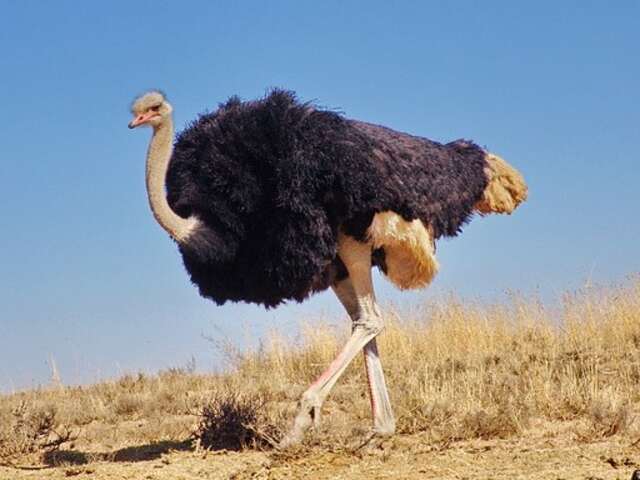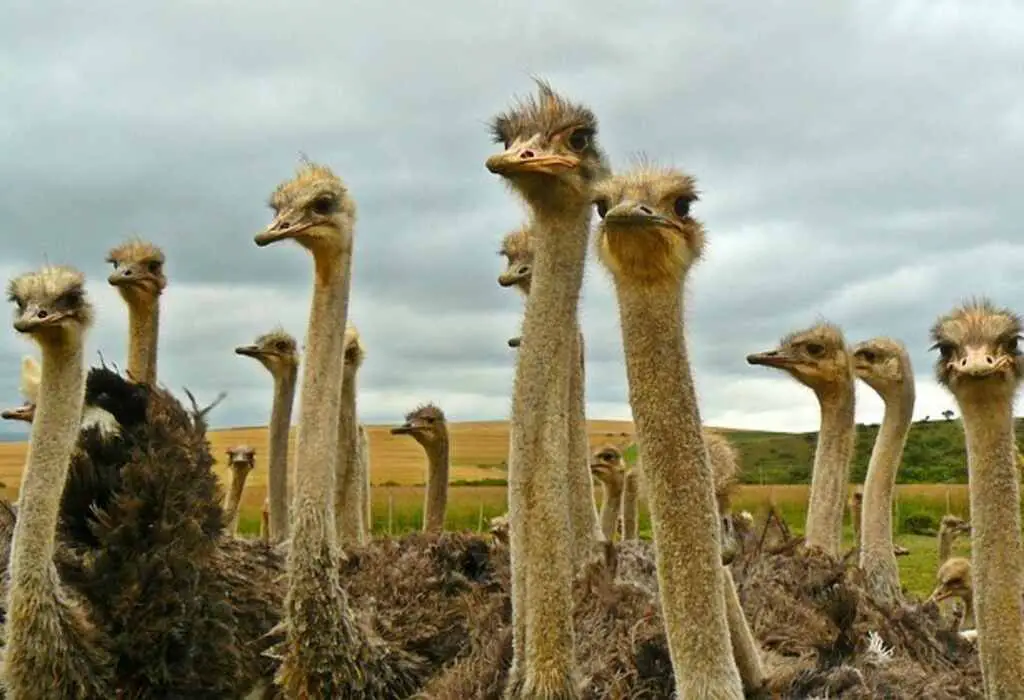In this article, we will be exploring the fascinating question of which bird has a brain smaller than either of its eyeballs. This is an intriguing topic that is sure to surprise you with its answers. I’ll give an overview of the types of birds that possess such a unique feature, as well as their defining characteristics, behaviors, and other interesting facts.
With this post, I hope to open your eyes to this strange but wonderful reality. So, grab a seat and get ready for an exciting journey into the wild world of avian anatomy.
Table of Contents
- 1 Which bird has a brain smaller than either of its eyeballs?
- 2 What bird has an eye that’s bigger than its brain?
- 3 Why are an ostriches eyes bigger than its brain?
- 4 Do ostriches have small brains?
- 5 How big is an ostrich brain in inches?
- 6 Why do ostrich have small brains?
- 7 Which bird has the smallest brain?
- 8 Which bird has the biggest brain?
- 9 Which bird has the biggest brain relative to its body size?
- 10 Author
Which bird has a brain smaller than either of its eyeballs?
Believe it or not, there are several bird species that have a brain smaller than either of its eyeballs. The Ostrich, Emu and the Flamingo all have brains that are smaller than either of their respective eyeballs.
This bizarre anomaly results from their long necks that support the weight of their head, which has lead to an evolutionary adaptation over time.
While these birds may not be as clever as other species, they make up for it with a keen eyesight and excellent senses of hearing and smell too!
These unique adaptations grant them great success in surviving in the wild, making them beloved creatures around the world.
What bird has an eye that’s bigger than its brain?
The Ostrich, Emu and Flamingo are all birds that have an eye bigger than its brain. This is because the eyes of these birds take up more space in their skulls than their brains do. The ostrich is the largest living bird species and has the biggest eyeball relative to its body size compared to any other animal.
Its eyes can measure up to 2 inches in diameter, which are about five times larger than its thumbnail-sized brain. The Emu’s eyes are also relatively large, measuring at 1 inch (2 cm) in diameter, with a brain only one third its size.
Additionally, the flamingo is another bird with a brain smaller than either of its eyeballs. Its eye measures at roughly 12 mm, while its brain size is only 7 mm across!
Why are an ostriches eyes bigger than its brain?
Ostriches are unique creatures due to their size, strength, and anatomy. One remarkable feature of these flightless birds is that they have a brain that is smaller than either of their two large eyes – an unusual evolutionary adaptation. This phenomenon can be attributed to the different environments in which ostriches live.
Because they are often threatened by predators in open spaces, their large eyes allow them to spot potential danger from far away. Having a smaller brain with fewer neurons gives them greater agility, as it allows for faster reflexes and helps conserve energy in order to outrun predators when necessary.
Additionally, since food is scarce in the typically dry habitats where ostriches live, having larger eyes has enabled them to better detect sources of nourishment over wide expanses of land.
Ultimately, these connected adaptations help ensure the survival of ostriches in hostile environments and have allowed them to thrive for thousands of years – even if it means having an eye bigger than its brain!
Do ostriches have small brains?
The Ostrich is one of the few birds that has a brain smaller than either of its eyeballs. Despite their large size, ostriches have relatively small brains compared to other birds.
This strange physical feature might be due to their evolutionary adaptations for maximum speed and agility when running, as well as their ability to survive in harsh desert climates.
While it’s not known exactly why these birds have such tiny brains, it may be beneficial for them to conserve energy by using less mental processing power.
Other interesting characteristics of these impressive birds include strong legs and wings, powerful sight and hearing, and incredibly sharp claws which aid in digging burrows to sleep in at night.
How big is an ostrich brain in inches?
An ostrich is an enormous bird, weighing up to 300 pounds and standing over 8 feet tall. Despite its large size, the ostrich has a surprisingly small brain.
In terms of measurements, the average ostrich brain is 0.12 inches long from front to back and 0.08 inches wide from left to right. It is also estimated that the brain only weighs around .04 ounces, or about 1 gram.
Why do ostrich have small brains?
This tiny yet important organ plays a vital role in regulating all the bird’s bodily functions like breathing, eating, sleeping, and even reproduction.
Due to its small brain size, ostriches have developed unique communication methods such as calling out loud and producing soft chirps with their neck feathers to communicate with one another instead of relying on verbal language like humans do.
The ostrich’s smaller brain size also means that it cannot think logically as other birds can, but it still maintains instinctive behaviors that allow it to survive in its natural environment without any additional help or guidance from a human or other animal species.

Which bird has the smallest brain?
The hummingbird is a unique species of bird due to its incredibly small size, and an even smaller brain. A hummingbird’s brain makes up only about 0.2 percent of its body weight, making it one of the smallest brains in all birds.
Remarkably, the hummingbird’s brain is actually much smaller than either of its eyeballs, which are also very tiny compared to other species of birds. Hummingbirds can fly faster than any other bird species; they reach speeds as high as 60 mph while in full flight.
They have such amazing maneuverability and agility because their wings can move so quickly (up to 80 times per second!) and this helps them save energy when zipping around through the air.
This agility is what makes them such efficient pollinators and a vital part in the life cycle of many plants. Despite their small brain size, hummingbirds are quite intelligent creatures that possess strong problem-solving skills and impressive cognitive abilities.
They store information related to territories and migration routes in their memory banks, giving them outstanding navigation abilities that allow them to navigate large distances with ease.
Studies have shown that these birds also remember where nectar sources are located within their territory, allowing them to find food quickly and efficiently during migratory periods or when resources become scarce.
Which bird has the biggest brain?
Parrots and members of the crow family, known as corvids, are known for their impressive problem-solving abilities. This is largely due to the fact that they have some of the biggest bird brains in comparison to other avian species.
In parrots, for instance, about 25% of their body weight is dedicated to its relatively large brain – a much higher percentage than found among most other birds. Furthermore, in one particular species of parrot (the Kea), 60% of its total energy is used just to power its brain!
As such, it’s no wonder that parrots can often be seen using tools and making complex decisions with relative ease. The same holds true for several species of corvid birds: ravens, crows, magpies and jays have all been observed displaying advanced problem-solving skills, learning from past-experiences and even demonstrating planning behavior.
Much like parrots, these birds possess comparatively large brains, which enable them to think ahead and plan accordingly. It’s also worth noting that the size of their brains appears directly related to innovation – with larger brained birds showing more creative solutions than smaller brained ones in certain tasks.
Which bird has the biggest brain relative to its body size?
Parrots, crows, magpies, jays and ravens are some of the smartest birds in the animal kingdom. All these species have proportionally large brains compared to their body sizes. Parrots are among the most cognitively capable birds, with a brain-to-body size ratio that is comparable to primates such as chimpanzees and humans.
Crows, magpies, jays and ravens are also quite smart with a variety of problem-solving skills and tool use abilities. These species all boast brain-to-body size ratios far above other avian species.
Specifically, parrots possess an impressive brain-to-body mass ratio of 1:1750 while crows, magpies, jays and ravens typically have a ratio around 1:800 meaning they possess relatively big brains when compared to their small bodies!
This suggests that these birds may be able to process information faster than other birds due to having more neurons per gram of brain tissue.
Related Post:




